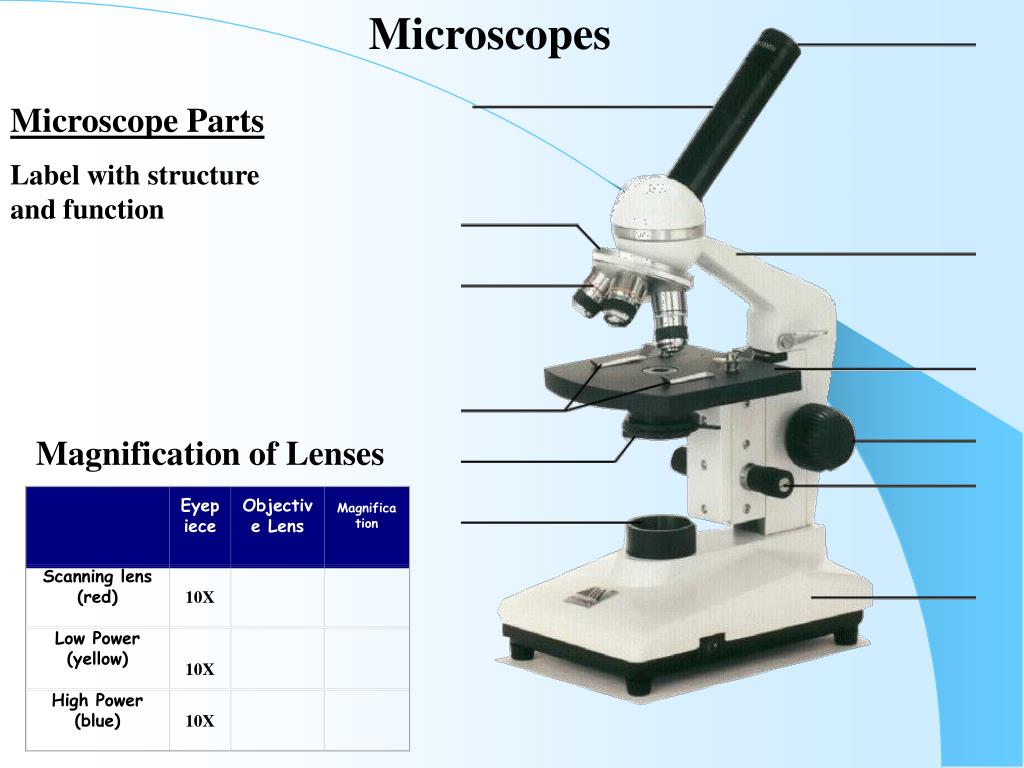

Illumination: The light source for a microscope. On/off switch: This switch on the base of the microscope turns the illuminator off and on. Stage height adjustment (Stage Control): These knobs move the stage left and right or up and down.Īperture: The hole in the middle of the stage that allows light from the illuminator to reach the specimen. Stage clips: Metal clips that hold the slide in place. Stage: The flat platform where the slide is placed. It also allows the specimen to be labeled, transported, and stored without damage. This allows the slide to be easily inserted or removed from the microscope. The specimen is placed on the glass and a cover slip is placed over the specimen. Most specimens are mounted on slides, flat rectangles of thin glass. Specimen or slide: The specimen is the object being examined. When focusing the microscope, be careful that the objective lens doesn’t touch the slide, as it could break the slide and destroy the specimen. A standard microscope has three, four, or five objective lenses that range in power from 4X to 100X. Objective lenses: One of the most important parts of a compound microscope, as they are the lenses closest to the specimen. The viewer spins the nosepiece to select different objective lenses. Nosepiece: A rotating turret that houses the objective lenses. The eyepiece usually contains a 10X or 15X power lens.ĭiopter Adjustment: Useful as a means to change focus on one eyepiece so as to correct for any difference in vision between your two eyes.īody tube (Head): The body tube connects the eyepiece to the objective lenses.Īrm: The arm connects the body tube to the base of the microscope.Ĭoarse adjustment: Brings the specimen into general focus.įine adjustment: Fine tunes the focus and increases the detail of the specimen. Eyepiece: The lens the viewer looks through to see the specimen.


 0 kommentar(er)
0 kommentar(er)
